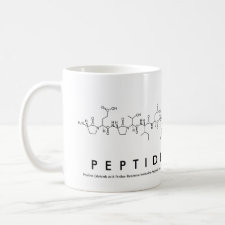
Authors: Piacham T, Nantasenamat C, Isarankura-Na-Ayudhya C, Prachayasittikul V
Article Title: Synthesis and computational investigation of molecularly imprinted nanospheres for selective recognition of alpha-tocopherol succinate.
Publication date: 2013
Journal: EXCLI Journal
Volume: 12
Page numbers: 701-718.
Alternative URL: http://www.excli.de/vol12/Piacham_14082013_proof.pdf
Abstract: Molecularly imprinted polymers (MIPs) are macromolecular matrices that can mimic the functional properties of antibodies, receptors and enzymes while possessing higher durability. As such, these polymers are interesting materials for applications in biomimetic sensor, drug synthesis, drug delivery and separation. In this study, we prepared MIPs and molecularly imprinted nanospheres (MINs) as receptors with specific recognition properties toward tocopherol succinate (TPS) in comparison to tocopherol (TP) and tocopherol nicotinate (TPN). MIPs were synthesized using methacrylic acid (MAA) as functional monomer, ethylene glycol dimethacrylate (EGDMA) as crosslinking agent and dichloromethane or acetronitrile as porogenic solvent under thermal-induced polymerization condition. Results indicated that imprinted polymers of TPS-MIP, TP-MIP and TPN-MIP all bound specifically to their template molecules at 2 folds greater than the non-imprinted polymers. The calculated binding capacity of all MIP was approximately 2 mg per gram of polymer when using the optimal rebinding solvent EtOH:H2O (3:2, v/v). Furthermore, the MINs toward TPS and TP were prepared by precipitation polymerization that yielded particles that are 200-400 nm in size. The binding capacities of MINs to their templates were greater than that of the non-imprinted nanospheres when using the optimal rebinding solvent EtOH:H2O (4:1, v/v). Computer simulation was performed to provide mechanistic insights on the binding modalities of template-monomer complexes. In conclusion, we had successful prepared MIPs and MINs for binding specifically to TP and TPS. Such MIPs and MINs have great potential for industrial and medical applications, particularly for the selective separation of TP and TPS.
Template and target information: tocopherol, TP, vitamin E
Author keywords: molecular imprinting, molecularly imprinted polymer, anti-cancer, tocopherol succinate, Computational chemistry



Join the Society for Molecular Imprinting

New items RSS feed
Sign-up for e-mail updates:
Choose between receiving an occasional newsletter or more frequent e-mail alerts.
Click here to go to the sign-up page.
Is your name elemental or peptidic? Enter your name and find out by clicking either of the buttons below!
Other products you may like:
 MIPdatabase
MIPdatabase









